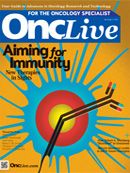Publication
Article
Oncology Live®
Looking Before Leaping: When to Change Practice Based on ASCO Results
Author(s):
Which studies should influence how I manage my patients and what criteria should I use to make these decisions?

It is clearly common practice among all clinical oncologists to ask themselves the following question at the completion of each annual meeting of the American Society of Clinical Oncology (ASCO): “Which studies should influence how I manage my patients and what criteria should I use to make these decisions?”
Before I present my perspective on these important issues, I want to emphasize both the increasing urgency and complexity of these questions. The data are no longer solely in the domain of the treating oncologist, with both company press releases and extensive information on the Internet frequently resulting in inquiries from patients and their families soon after such reports are available to the public.
Few would likely argue with the conclusion that it is reasonable to consider for routine clinical use a “novel regimen” reported at ASCO that contained commercially available antineoplastic agents or combined such drugs with other standard modalities (eg, surgery, external beam radiation), and that revealed a statistically significant impact on overall survival in a particular clinical setting.
Of course, one might hear a few purists declare that the true “gold standard” in this arena is the actual publication of the data from such a trial in the peer-reviewed medical literature. But unless there are claims, either in meeting-based discussions of the abstract or through other sources, that there is a serious concern with what has been stated in the abstract/presentation, it is difficult to argue that patients in the specific clinical setting should be denied the potential benefits of the new strategy while the publication process runs its natural—and often protracted—course.
Phase III randomized trial data reported to be “positive” but not for an overall survival endpoint may also form the basis for a change in practice, but in such circumstances additional issues require careful consideration. For example, a documented improvement in progression-free survival or time to progression of cancer-related symptoms may be highly clinically relevant, but one must inquire whether excessive toxicity of the treatment regimen negates any benefit resulting from delay in disease progression.
Similarly, claimed “statistically significant” results of randomized phase II trials may be quite impressive, but in this setting one might be concerned with the issue of a limited sample size.

Maurie Markman, MD
Editor-in-Chief of OncLive
Vice President of Patient Oncology Services and National Director for Medical Oncology Cancer Treatment Centers of America, Eastern Regional Medical Center
Nothing in these statements should be taken as implying that the reported “positive” results of randomized trials that fall short of documenting an improvement in overall survival should be ignored, but only that additional questions may need to be asked and answered to the satisfaction of the treating physician.
Results of nonrandomized phase II studies, and the increasingly common scenario of phase I trials reporting a favorable therapeutic outcome, represent the most difficult reports to define from the perspective of their impact on future noninvestigative disease management. Many such studies are actually modest variations of currently accepted practice and often represent important improvements in a regimen’s therapeutic index, and there will surely be abstracts that appropriately challenge existing management paradigms.
Here one might argue that the publication of a peer-reviewed paper is particularly relevant since the reviewers of the manuscript hopefully will have specific expertise in the subject and will be able to appropriately scrutinize and validate what has been claimed in the trial’s results. However, as every clinical oncologist knows very well, optimal management of an individual cancer patient is far more complex than that suggested by any published “evidence-based guidelines,” and the delivery of high-quality care requires considerable clinical judgment, as well as frequent and thorough discussion with the patient.
Finally, it is reasonable to argue that the unquestionable ongoing and truly spectacular revolution in our understanding of the biology of human cancers and the specific impact of knowledge of molecular abnormalities in particular cancers, as well as subsets of these conditions, have rather radically and surely permanently changed the playing field regarding the interpretation of clinical studies.
For example, how might one interpret the results of a very small clinical trial involving only 4 to 8 research subjects with a rare/uncommon molecular abnormality that revealed an interesting/very surprising level of biological/clinical activity for a currently commercially available antineoplastic agent known (or perhaps more appropriately stated “believed”) to target this specific pathway in another tumor type? While there is no easy answer to this provocative question, it is quite reasonable to predict such reports of small, single institutional prospective or retrospective studies will be far more common in the future.
So, while the provocative results of an abstract describing the limited experience with a novel antineoplastic strategy reported at the annual meeting of ASCO will clearly not represent the final word on the particular topic, they may represent highly relevant data upon which future personalized clinically beneficial care may be based.









